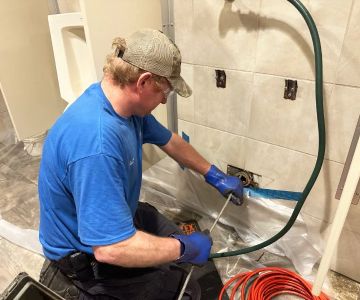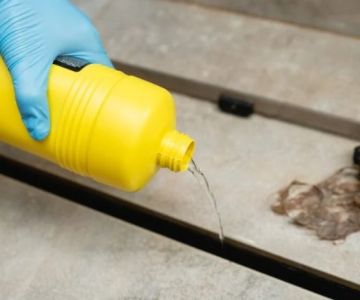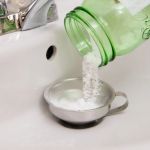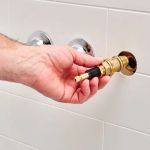
How to Replace a Sink Trap That Rusted Through
If you’ve ever encountered a leaky sink or unpleasant odors coming from your drain, the culprit may be a rusted sink trap. This common issue can lead to water damage or plumbing problems if not addressed in time. Luckily, replacing a rusted-through sink trap is a manageable task that most homeowners can handle on their own. In this guide, we’ll walk you through the process step-by-step, offering tips, advice, and the tools you’ll need to get the job done. Plus, we’ll share some insights into choosing the right replacement trap to avoid future problems.
- 1. Understanding Sink Traps and Their Purpose
- 2. Identifying a Rusted Sink Trap
- 3. Tools Needed to Replace a Sink Trap
- 4. Steps to Replace a Rusted Sink Trap
- 5. Common Mistakes to Avoid When Replacing a Sink Trap
- 6. Where to Buy Replacement Parts
1. Understanding Sink Traps and Their Purpose
A sink trap, also known as a P-trap, is a crucial component of your plumbing system. It’s located beneath your sink and serves to prevent sewer gases from entering your home by creating a water seal. This trap also catches debris, hair, and other particles that might clog your drain. While sink traps are designed to last, rust and corrosion can cause them to deteriorate over time, leading to leaks or failure.
1.1 The Importance of a Well-Maintained Trap
Without a properly functioning trap, your home is at risk of foul odors and even more serious plumbing issues. It’s essential to maintain your sink trap in good condition, and replacing a rusted trap is a necessary step to ensure your plumbing continues to work efficiently.
2. Identifying a Rusted Sink Trap
Before replacing your sink trap, it’s important to identify whether the trap is indeed rusted. Here are some signs that your sink trap needs replacing:
2.1 Visible Rust or Corrosion
One of the most obvious signs is visible rust or corrosion around the trap. If you notice the metal turning a reddish-brown color or flaking off, it’s time to replace the trap.
2.2 Water Leaks
Another sign of a rusted trap is water leaking around the trap, especially after you’ve used the sink. These leaks can lead to water damage under your sink and create the potential for mold growth if not fixed promptly.
2.3 Unpleasant Odors
Since a rusted trap can lose its seal, sewer gases might escape into your kitchen or bathroom. This can cause foul smells, which is a clear indicator that your trap needs attention.
3. Tools Needed to Replace a Sink Trap
Replacing a rusted sink trap is relatively simple, but you’ll need a few basic tools. Here’s what you’ll need to get started:
3.1 Wrench
A pipe wrench or adjustable wrench is essential for loosening the nuts holding the sink trap in place. A small adjustable wrench is usually sufficient for most sink traps.
3.2 Replacement Sink Trap
Make sure to buy a new sink trap that matches your existing plumbing setup. P-traps come in different materials such as plastic and metal, so ensure you purchase the correct one. Plastic traps are more resistant to rust, but metal ones can last longer if maintained properly.
3.3 Bucket or Towel
When removing the trap, some water may spill out, so it's a good idea to have a bucket or towel nearby to catch any water. This will help keep your work area dry and clean.
3.4 Plumber’s Tape or Sealant
Plumber’s tape can be used on the threads of the pipe joints to ensure a tight seal, preventing leaks after you install the new trap. It’s also good to have some plumber’s sealant on hand if necessary.
4. Steps to Replace a Rusted Sink Trap
Now that you have your tools and replacement parts ready, follow these steps to replace your rusted sink trap:
4.1 Step 1: Turn Off the Water Supply
Before you begin any plumbing work, make sure to turn off the water supply to the sink. This will prevent any accidental water flow while you’re working on the trap.
4.2 Step 2: Place a Bucket or Towel Under the Trap
Position a bucket or towel beneath the sink trap to catch any residual water that may spill out as you remove the old trap.
4.3 Step 3: Loosen the Trap Nuts
Using your wrench, loosen the nuts that secure the trap to the drainpipe and the sink’s drain tailpiece. Be sure to remove any old plumber’s tape or sealant from the threads to make installation easier.
4.4 Step 4: Remove the Old Trap
Once the nuts are loose, carefully remove the old, rusted sink trap. Dispose of it properly and inspect the rest of your plumbing for any signs of damage.
4.5 Step 5: Install the New Sink Trap
Place the new trap in position and tighten the nuts securely with your wrench. Apply plumber’s tape or sealant to the threads to ensure a leak-free seal.
4.6 Step 6: Test for Leaks
Turn on the water supply and run the sink to test for leaks. If you notice any, tighten the nuts slightly or apply more plumber’s tape until the leak stops.
5. Common Mistakes to Avoid When Replacing a Sink Trap
While replacing a sink trap is a straightforward task, there are a few common mistakes that DIYers should avoid:
5.1 Not Turning Off the Water Supply
Always remember to turn off the water supply before you start working on the trap. Forgetting this step can lead to unwanted water spillage and even potential damage to your sink or surrounding area.
5.2 Using the Wrong Size Trap
Make sure to measure your existing trap and drain pipes before purchasing a replacement. Using a trap that doesn’t fit properly will cause leaks and potentially worse problems.
5.3 Over-tightening the Nuts
It’s important to tighten the trap nuts securely, but over-tightening can crack the plastic or damage the threads. Tighten them until they’re snug, but not excessively tight.
6. Where to Buy Replacement Parts
If you're ready to replace your sink trap, you can find high-quality replacement parts at Plumbers Supply Hub. Our online store offers a wide range of sink traps, including both plastic and metal options, as well as all the necessary tools to get the job done. Visit us today to find the right parts for your sink plumbing needs.









 Tommie's Plumbing4.0 (508 reviews)
Tommie's Plumbing4.0 (508 reviews) Plum Perfect Plumbing4.0 (23 reviews)
Plum Perfect Plumbing4.0 (23 reviews) Chastain Plumbing, Heating and Cooling4.0 (172 reviews)
Chastain Plumbing, Heating and Cooling4.0 (172 reviews) New Philly Plumbing LLC4.0 (29 reviews)
New Philly Plumbing LLC4.0 (29 reviews) Plumbing Matters Rooter & Plumbing Services Incorporated5.0 (375 reviews)
Plumbing Matters Rooter & Plumbing Services Incorporated5.0 (375 reviews) Podella Plumbing & Heating LLC5.0 (6 reviews)
Podella Plumbing & Heating LLC5.0 (6 reviews) How to Choose a Reliable Plumber for Emergency Repairs
How to Choose a Reliable Plumber for Emergency Repairs How to Replace a Malfunctioning Pressure Reducing Valve
How to Replace a Malfunctioning Pressure Reducing Valve How to Use Baking Soda and Vinegar to Clear Clogged Drains
How to Use Baking Soda and Vinegar to Clear Clogged Drains What Causes Discolored Water and When to Worry: Causes, Effects, and Solutions
What Causes Discolored Water and When to Worry: Causes, Effects, and Solutions How to Replace an Outdated Plumbing Fixture Safely: A Step-by-Step Guide
How to Replace an Outdated Plumbing Fixture Safely: A Step-by-Step Guide How to Handle Plumbing in Mobile Homes: Essential Tips and Solutions
How to Handle Plumbing in Mobile Homes: Essential Tips and Solutions